
Transforming your outdoor space into a beautiful, functional garden doesn't require a huge budget or a professional designer. With the right ideas and a little creativity, you can turn even the smallest patch of land—or balcony—into a stunning retreat.
Whether you're dreaming of a lush oasis, a productive veggie plot, or a cozy nook to unwind, here are 25 stunning home garden ideas to inspire your next project.
Vertical Gardens
Perfect for small spaces, vertical gardens use walls or trellises to grow plants upward. Use pocket planters, wall-mounted pots, or repurposed pallets.
Vertical gardens, also known as green walls or living walls, are a method of growing plants upward rather than outward. They involve cultivating vegetation on vertical surfaces—either attached to the exterior or interior of buildings, freestanding structures, or specially designed panels. This innovative approach combines aesthetics, sustainability, and practical benefits, making it increasingly popular in urban environments where space is limited.
Common Plants Used in Vertical Gardens
-
Indoor: Pothos, ferns, philodendrons, spider plants, peace lilies.
-
Outdoor: Succulents, ivy, ferns, herbs (like basil, mint), flowering plants.
Choosing the right plants depends on factors like light availability, climate, and the purpose of the garden.
Raised Garden Beds
Not only do raised beds look neat and organized, but they also improve drainage and make gardening easier on your back.
Spiral Herb Garden
A spiral herb garden is a raised garden bed constructed in a spiral, typically about 3 to 5 feet in diameter and 2 to 3 feet tall at the center. The structure is usually built from natural materials such as:
-
Bricks
-
Rocks
-
Stones
-
Wood logs
The spiral form creates microclimates: the top is drier and sunnier, while the bottom is cooler and retains more moisture. This makes it perfect for planting herbs with different growing preferences in one small space.

Why Choose a Spiral Herb Garden?
-
Space-Efficient
-
Great for small yards, patios, or urban gardens.
-
Vertical design maximizes planting space.
-
-
Water-Wise
-
Water drains naturally from the top down, minimizing waste.
-
Ideal for regions with low rainfall or for gardeners wanting to conserve water.
-
-
Microclimate Variety
-
Different zones in the spiral offer varied sun, shade, and moisture conditions.
-
You can group herbs according to their specific needs.
-
-
Easy Access
-
Spiral design allows easy reach from all sides.
-
Reduces bending and kneeling compared to flat garden beds.
-
-
Aesthetic Appeal
-
Unique, eye-catching design.
-
Adds a natural, organic feel to your garden space.
-
Hanging Planters: Stylish and Space-Saving Gardening
Hanging planters are a versatile and decorative way to grow plants by suspending them above the ground. They’re ideal for small spaces, balconies, patios, and indoor settings where floor space is limited. Whether you're growing trailing flowers, herbs, or even small vegetables, hanging planters add beauty and greenery at eye level or higher.
Creative Ideas for Hanging Planters
-
Kitchen Herb Garden: Hang small pots of basil, mint, and parsley near a sunny window.
-
Vertical Wall Garden: Use a wall-mounted pocket planter to grow succulents or lettuce.
-
Upcycled Planters: Repurpose old tin cans, teapots, or baskets with added drainage holes.
-
Macramé Planter Holders: Add a boho vibe to any space with handmade rope hangers.
DIY Pallet Planters: Affordable, Eco-Friendly Gardening
Looking for a creative, affordable way to grow plants? DIY pallet planters are a perfect solution. They’re easy to make, eco-friendly, and great for small spaces. Whether you're growing flowers, herbs, or vegetables, turning a wooden pallet into a planter adds rustic charm and functionality to your garden, balcony, or patio.
Tips for Success
-
Lean your pallet against a sunny wall or fence for vertical growing.
-
Label your plants with tags or chalk paint for a decorative touch.
-
Check pallet safety: Make sure the wood is untreated (look for "HT" for heat-treated pallets).
Creative Variations
-
🌿 Herb Kitchen Garden: Place near your kitchen door with fresh herbs ready to pick.
-
🌸 Flower Wall: Create a blooming vertical garden with colorful annuals.
-
🌱 Succulent Art: Turn the pallet into a living piece of wall art.
-
🪴 Tiered Garden Bed: Lay the pallet flat and grow veggies in rows.
What You’ll Need
-
1 wooden pallet (look for HT-stamped pallets – heat-treated, not chemically treated)
-
Sandpaper or sander
-
Hammer and nails or a power drill
-
Landscaping fabric or weed barrier
-
Staple gun and staples
-
Potting soil
-
Plants or seeds (herbs, flowers, succulents, vegetables)
How to Make a DIY Pallet Planter (Step-by-Step)
1. Choose and Prepare Your Pallet
-
Find a clean, undamaged pallet.
-
Sand all surfaces to remove splinters and rough edges.
2. Attach Landscaping Fabric
-
Turn the pallet over so the back is facing up.
-
Staple landscaping fabric to the bottom and sides of each shelf (the gaps between pallet slats).
-
This will hold the soil in place while allowing for drainage.
3. Optional: Paint or Stain
-
Paint or stain your pallet for a finished look. Let it dry completely.
4. Fill With Soil
-
Stand the pallet upright or lay it flat.
-
Fill each shelf with potting soil, pressing down gently to compact it.
5. Add Plants
-
Insert your chosen plants into each section.
-
Good options include:
-
Herbs: basil, parsley, mint, thyme
-
Flowers: petunias, marigolds, pansies
-
Leafy greens: lettuce, spinach, arugula
-
Succulents: for a low-maintenance option
-
6. Water Carefully
-
Water from the top and let it trickle down.
-
Ensure proper drainage to avoid waterlogging.
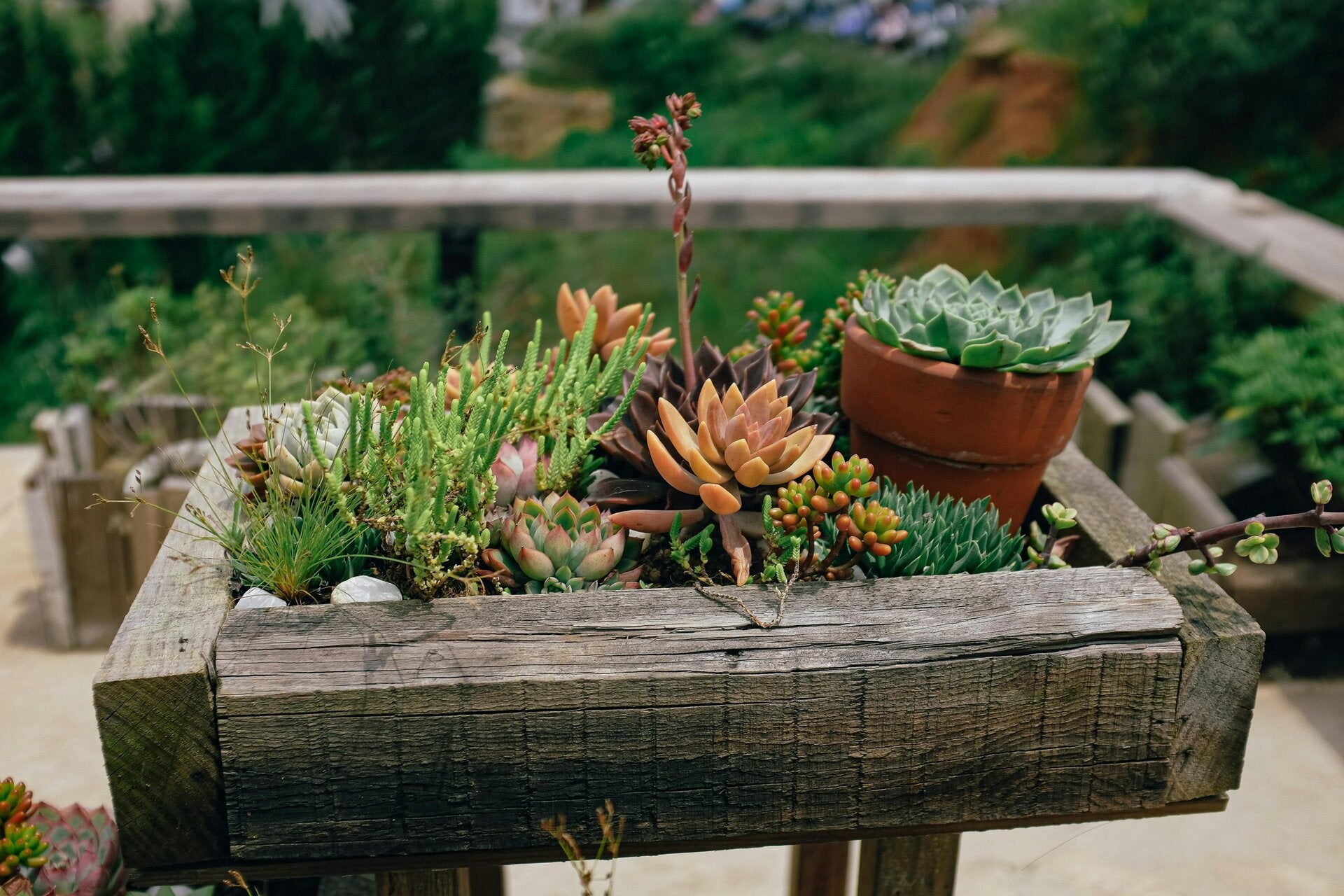
Native Garden
Native plants are species that have historically grown in a particular region without human intervention. They have evolved over thousands of years to thrive in the local soil, climate, and alongside native wildlife.
Examples might include:
-
Milkweed in North America (critical for monarch butterflies)
-
Echinacea (coneflower) on the prairie
-
Banksia in Australia
-
Heather in parts of the UK
The Environmental Benefits of Native Gardens
1. Support Biodiversity
Native gardens provide essential habitat for native bees, butterflies, birds, and other wildlife. In fact, many insects and animals can only feed or reproduce using specific native plants.
🐝 Fun Fact: 90% of plant-eating insects rely on a small group of native plants to survive.
2. Reduce Water Usage
Native plants are adapted to local rainfall patterns and soil conditions, which means they often require little to no irrigation once established—saving precious water resources.
💡 A traditional lawn uses 10 times more water than a native landscape of the same size!
3. Eliminate Harmful Chemicals
Because native plants are naturally resistant to local pests and diseases, they reduce (or eliminate) the need for:
-
Synthetic fertilizers
-
Pesticides
-
Herbicides
This helps protect water supplies from runoff pollution and safeguards soil health.
4. Improve Air and Soil Quality
Native plants:
-
Absorb carbon dioxide and release oxygen
-
Help reduce erosion
-
Enrich the soil with organic matter
Many native species have deep root systems that stabilize soil and filter pollutants before they reach groundwater.
5. Lower Maintenance Over Time
After the first couple of years of establishment, native gardens often require:
-
Minimal watering
-
Little to no mowing
-
Limited weeding
This means fewer fossil fuels burned by gas mowers and trimmers, and more time for you to enjoy your yard.
Edible Garden
Incorporate fruits, vegetables, and herbs into your garden design. It’s functional, beautiful, and delicious!
It’s a rewarding way to enjoy fresh, homegrown food while connecting with nature and reducing your reliance on store-bought produce. Whether you have a backyard, balcony, or just a few pots on a windowsill, edible gardening can fit almost any space. It promotes healthier eating, reduces food miles, and gives you control over what goes into your food—especially when grown organically. Plus, there’s something especially satisfying about harvesting ingredients straight from your garden to your plate.

Zen-Inspired Garden
Incorporating Zen garden elements into your backyard can transform the space into a peaceful retreat that promotes relaxation, mindfulness, and balance. The simplicity of natural materials—like raked gravel, smooth stones, and minimal greenery—helps reduce visual clutter and encourages a sense of calm. These design elements are low-maintenance and water-efficient, making them ideal for sustainable landscaping. Features like a quiet corner for meditation, a small rock arrangement, or a fountain can reduce stress, improve focus, and create a soothing environment right at home. Whether you use a full Zen layout or just borrow certain elements, integrating this style into your outdoor space offers both aesthetic beauty and emotional well-being.
Garden Pathways
Garden pathways are both functional and decorative elements that enhance the flow, structure, and beauty of any outdoor space. They guide movement through a garden, connect different areas, and help prevent foot traffic from damaging plants or soil.
1. Roll-Out Garden Pathway
Best for: Temporary or flexible pathways
Materials: Pre-made roll-out wooden slat paths or rubber mat paths
Why it's easy: Just unroll and place on level ground—no tools or digging required. These are great for renters or seasonal use, and they add instant structure to any garden.
Tip: Look for weather-resistant materials like cedar or recycled rubber.
2. Gravel Pathway
Best for: Natural-looking, low-maintenance paths
Materials: Landscape fabric, edging (optional), gravel or crushed stone
Why it's easy: Lay landscape fabric to block weeds, pour gravel on top, and level it out. No need for heavy construction.
Tip: Add edging (metal, wood, or stone) to keep the gravel neatly in place.
3. Stepping Stone Path
Best for: Creating a whimsical or informal path
Materials: Concrete or rubber stepping stones, sand or soil
Why it's easy: Just lay the stones directly on level ground or into shallow dug spots. You can space them out for a casual look.
Tip: Grow ground cover like moss or creeping thyme between the stones for extra charm.
4. Mulch or Wood Chip Path
Best for: Natural, earthy paths around vegetable gardens or flower beds
Materials: Mulch or bark chips, landscape fabric (optional)
Why it's easy: Spread mulch directly onto a cleared path. Use landscape fabric underneath for weed control.
Tip: Refresh the mulch yearly to maintain appearance and function.
5. Brick or Paver Path
Best for: Durable, classic-looking paths
Materials: Bricks or concrete pavers, sand, level surface
Why it's easy: Lay bricks or pavers in a simple pattern (like herringbone or straight rows) on a compacted sand base.
Tip: Use a rubber mallet to set the bricks in place and sweep sand into the gaps to lock them in.
How to Make a Fairy Garden with Kids: A Magical DIY Project
Looking for a creative and meaningful activity to do with your kids? Creating a fairy garden is the perfect mix of imagination, outdoor play, and hands-on crafting. Not only is it a fun family project, but it also encourages kids to connect with nature and think creatively about the world around them.
Whether you have a big backyard, a small patio, or even just a windowsill, you can create a tiny, magical world that feels straight out of a storybook.
Water Features
Incorporating water features into your garden—such as fountains, ponds, or bubbling rocks—adds both visual beauty and soothing sound, creating a tranquil atmosphere that promotes relaxation and reduces stress. Beyond aesthetics, water features can attract beneficial wildlife like birds, butterflies, and pollinators, helping to support local biodiversity. The gentle movement and reflective surface of water also enhance the sensory experience of your garden, making the space feel cooler, more dynamic, and alive. Whether large or small, a well-placed water feature can transform your outdoor area into a peaceful, nature-inspired retreat.

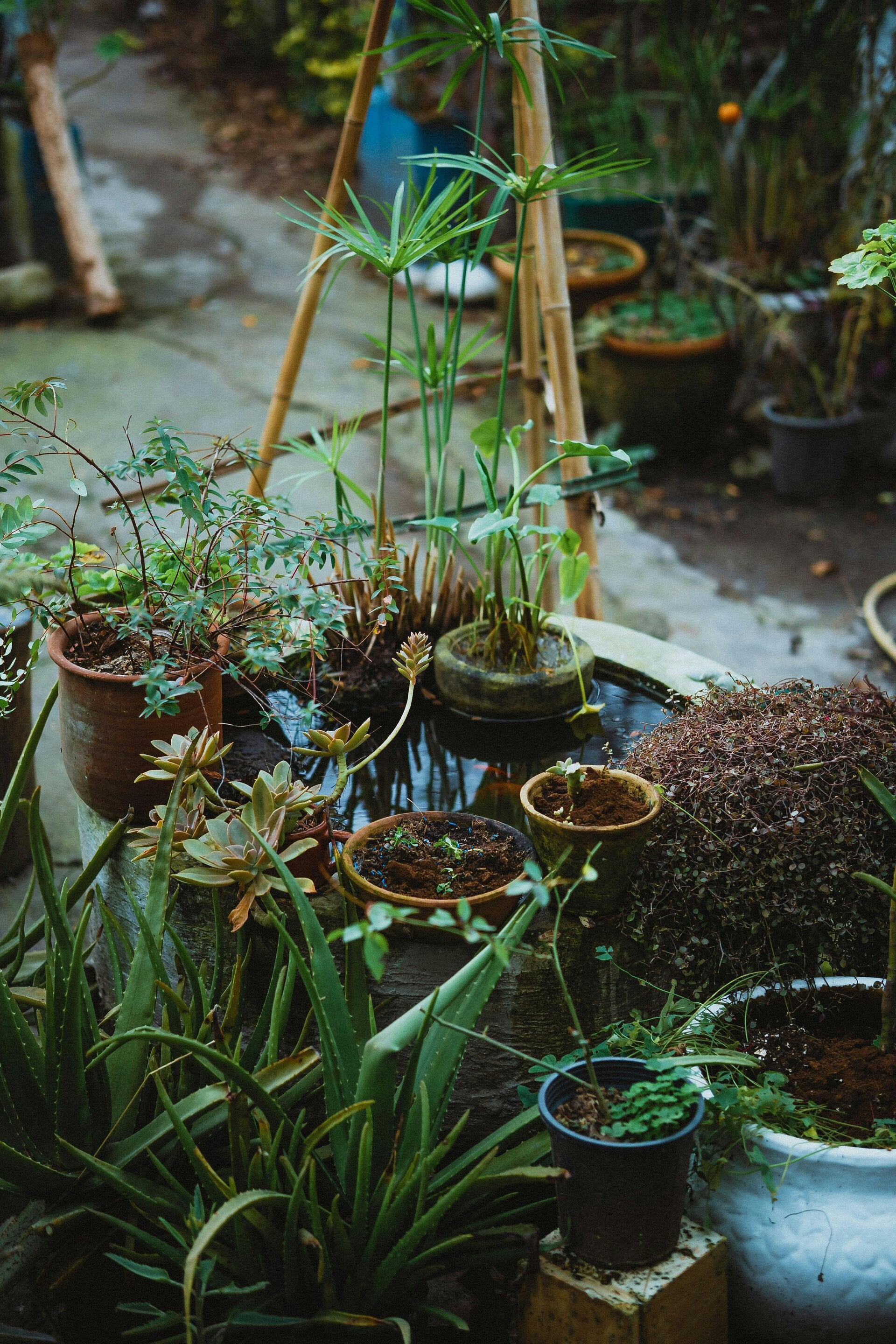
Trellised Entryway
A trellis arch makes a stunning and inviting entryway for your garden, adding vertical interest and a touch of elegance. It frames the entrance beautifully and creates a sense of transition from one space to another. Climbing plants growing over the arch bring color, fragrance, and life, enhancing the overall garden experience.
Great plants for a trellis arch include:
-
Clematis
-
Wisteria
-
Climbing roses
-
Honeysuckle
-
Jasmine
-
Morning glory
-
Passionflower
These vines provide lush foliage and vibrant blooms that will transform your arch into a natural gateway.
DIY Recycled Garden Art Ideas: Creative and Eco-Friendly Decor
Using recycled materials to create garden art is a fantastic way to add personality and charm to your outdoor space while being kind to the environment. Not only do these projects reduce waste, but they also allow you to customize your garden with unique, budget-friendly pieces. Here are some easy DIY ideas to get you started:
1. Bottle Cap Mosaic Stepping Stones
Gather colorful bottle caps and embed them into concrete stepping stones. Arrange caps in fun patterns or shapes before the concrete sets, creating vibrant, eye-catching paths in your garden.
2. Painted Tire Planters
Old tires can be transformed into bold, colorful planters with a coat of weatherproof paint. Stack them for a tiered effect or use them individually to grow flowers, herbs, or succulents.
3. Tin Can Lanterns
Clean out empty tin cans, punch holes in decorative patterns using a hammer and nail, then place candles or solar lights inside. These lanterns create magical lighting effects during evening garden gatherings.
4. Pallet Wood Garden Signs
Repurpose wooden pallets into rustic garden signs. Sand the wood, paint garden-themed designs or plant names, and hang them on fences or stakes to add charm and direction.
5. CD or DVD Garden Spinners
Old CDs or DVDs catch the light and spin in the wind, adding sparkle and movement. Hang them from tree branches or stakes with string for a whimsical, reflective garden decoration.
Bonus Tip: Look around your home for old jars, broken tools, or scrap metal—they can all be repurposed into stunning garden art with a bit of creativity!

Every Backyard Needs a Fire Pit: Warmth, Connection & Outdoor Magic
There’s something undeniably magical about gathering around a fire. The crackling wood, glowing embers, and flickering flames have a way of drawing people in—creating a space that feels both cozy and timeless. That’s why more and more homeowners are adding backyard fire pits to their outdoor living spaces.
Whether you’re hosting friends, roasting marshmallows with the kids, or simply unwinding after a long day, a fire pit can transform your backyard into an all-season retreat.
Outdoor Dining Nook
Why Outdoor Dining Is Worth the Hype
1. It Enhances Everyday Moments
Eating outside turns an ordinary meal into an experience. Natural light, fresh air, and the sounds of birds or rustling leaves create a calming backdrop that encourages you to slow down and savor the moment.
2. It’s a Great Way to Entertain
From BBQs to birthday brunches, outdoor spaces are ideal for entertaining. With more room to spread out and a relaxed vibe, guests feel at ease—and clean-up is often easier, too!
3. Boosts Your Well-Being
Spending time outdoors has been linked to lower stress, better moods, and improved focus. Combine that with good food and good company? That’s a wellness win.
Container Gardening
1. Works in Any Space
Whether it’s a balcony, porch, rooftop, or window box, container gardening fits anywhere.
2. Easy to Manage
Smaller spaces mean less weeding, watering, and bending over. It’s ideal for beginners or people with mobility issues.
3. Portable
You can move your plants around to catch the sun, protect them from weather, or change your layout any time.
4. Creative Freedom
Mix and match pots, plant types, and designs. Go bold with colors or stick to sleek, modern neutrals—it’s up to you.
Garden Lighting
Garden lighting enhances the beauty and usability of your outdoor space by highlighting key features, creating ambiance, and improving safety after dark. Whether using solar lights, string lights, lanterns, or spotlights, thoughtful lighting can transform your garden into a magical nighttime retreat while extending the time you can enjoy it.
Shade Garden
While many plants love full sun, there’s a wide variety of species that thrive in low-light conditions, offering rich textures, lush foliage, and even colorful blooms.
Great Plants for Shade Gardens:
-
Hostas – Known for their stunning foliage in shades of green, blue, and variegated patterns
-
Ferns – Lacy, elegant, and perfect for woodland-style gardens
-
Astilbe – Feathery plumes of pink, white, or red flowers that love moist, shady spots
-
Heuchera (Coral Bells) – Colorful leaves in shades of purple, bronze, and lime green
-
Lungwort (Pulmonaria) – Speckled foliage and early spring flowers in blue, pink, or white
-
Japanese Forest Grass (Hakonechloa) – Graceful, arching leaves that add movement and texture
With the right plants, your shady garden can become a cool, peaceful retreat full of life and color.

Create a Wildlife Corner: A Safe Haven for Nature in Your Backyard
What to Include in Your Wildlife Corner:
-
Bird Feeders: Hang seed, suet, or nectar feeders to attract finches, chickadees, hummingbirds, and more. Keep them clean and filled year-round.
-
Water Source: Add a birdbath, shallow dish, or small pond for drinking and bathing—essential for birds and beneficial insects.
-
Native Plants & Shrubs: Plant native flowers, berries, and grasses to provide food and shelter for birds, bees, butterflies, and even small mammals.
-
Brush Pile or Log Stack: A tucked-away pile of sticks or logs creates natural cover for frogs, hedgehogs, or insects.
-
No-Pesticide Zone: Keep this area chemical-free to protect the animals you're trying to help.
Benefits of a Wildlife Corner:
-
Supports declining bird and pollinator populations
-
Creates a peaceful, nature-filled space to enjoy
-
Helps balance pests naturally by encouraging beneficial insects
-
Offers kids and adults a chance to observe wildlife up close
Garden Mirror Illusion
Adding mirrors to your garden is a clever way to create the illusion of more space, reflect natural light, and highlight beautiful plants or features. Whether mounted on a fence or tucked among greenery, garden mirrors can make small spaces feel larger and add a touch of unexpected magic to shady corners.
Strategically placed mirrors can make small gardens appear larger and add depth and reflection to your design.


Succulent Rock Garden
A succulent rock garden combines the rugged beauty of stones with the unique textures and colors of drought-tolerant succulents, creating a low-maintenance, visually striking outdoor feature. Perfect for sunny spots, these gardens require minimal water and care, making them ideal for busy gardeners or those looking to add a modern, desert-inspired vibe to their landscape.
Themed Plant Beds
Themed plant beds are a fantastic way to add personality and cohesion to your garden by grouping plants around a specific idea or style. Whether it’s a butterfly garden filled with nectar-rich flowers, a herb garden packed with culinary favorites, or a tropical oasis bursting with bold foliage, themed beds make gardening more intentional and visually impactful. Plus, they help attract specific wildlife and create memorable outdoor spaces.
One of my favorite themed plant beds to create is a moon garden—a serene space designed with white, silver, and pale blooms that glow softly in the moonlight. Filled with fragrant night-blooming flowers like moonflowers, white jasmine, and evening primrose, a moon garden invites peaceful nighttime enjoyment and adds a magical touch to any outdoor space.
Pergola or Arbor Feature
Adding a pergola or arbor to your garden introduces both structure and elegance, creating a focal point that enhances the overall design of your outdoor space. These features provide shade, define walkways or seating areas, and offer the perfect support for climbing plants like roses, wisteria, or clematis.
A pergola can frame a patio or dining space beautifully, offering filtered light and a sense of enclosure, while an arbor creates a charming entryway or passage through the garden. Both options add vertical interest and invite natural growth, blending function and beauty in a way that elevates any garden setting.
Sensory Garden
👀 Sight
-
Colorful flowers: Plant bright, eye-catching blooms like marigolds, zinnias, sunflowers, or snapdragons.
-
Contrasting foliage: Use plants with interesting leaf shapes or variegated patterns (e.g., coleus, caladium).
-
Decorative elements: Add garden mirrors, mosaic tiles, or painted rocks to reflect light and color.
👂 Sound
-
Grasses and bamboo: Plant ornamental grasses (like miscanthus) or bamboo that rustle in the wind.
-
Water features: Install a small fountain, birdbath, or bubbling rock for gentle, calming sounds.
-
Wind chimes: Hang chimes made from metal, bamboo, or shells to add soft, musical tones.
✋ Touch
-
Textured plants: Grow plants with interesting textures, like lamb’s ear (soft), sedum (rubbery), or coneflower (spiky).
-
Natural materials: Incorporate stone, wood, sand, or bark paths for varied tactile experiences.
-
Interactive features: Add items like smooth pebbles, driftwood, or a sandbox to encourage hands-on exploration.
👃 Smell
-
Fragrant herbs: Include lavender, mint, rosemary, basil, or thyme for a burst of natural scent.
-
Scented flowers: Roses, jasmine, gardenias, or sweet alyssum can perfume the air beautifully.
-
Aromatic pathways: Line walkways with scented plants that release fragrance when brushed against.
👅 Taste
-
Edible plants: Plant strawberries, cherry tomatoes, sugar snap peas, or blueberries.
-
Herb garden: Create a section with edible herbs like parsley, chives, oregano, and dill.
-
Fruit trees or bushes: If space allows, grow small fruiting trees or berry bushes for fresh garden snacks.
A sensory garden can be as simple or elaborate as you like—it’s all about creating a space that invites exploration, relaxation, and connection to nature through the senses.
A sensory garden is a thoughtfully designed space that stimulates the senses—sight, sound, touch, smell, and taste—offering a therapeutic, interactive experience for people of all ages and abilities. Here are some ideas to help you create your own:

Garden Room Division


1. Living Plant Walls or Hedges
Use tall plants, shrubs, or climbing vines on trellises to form natural dividers.
Examples:
-
Bamboo (fast-growing and tall)
-
Boxwood or privet hedges
-
Climbing ivy or clematis on a trellis
2. Wooden Lattice or Trellis Panels
Great for separating areas while still allowing light and airflow. Add climbing plants for a lush, green look.
Perfect for: Creating semi-private zones like seating or dining areas.
3. Raised Garden Beds
Arrange raised planters in strategic spots to act as visual and physical dividers. They define space and double as growing areas.
Tip: Vary heights for more interest and structure.
4. Decorative Screens or Panels
Use metal, bamboo, or recycled wood screens as stylish, moveable dividers. Many come with cut-out patterns or designs for added flair.
Bonus: Easy to reposition or remove as needed.
5. Potted Plant Rows
Line up large pots or containers with tall or bushy plants to create a flexible, movable barrier.
Great for: Patios, balconies, or rented spaces.
6. Recycled Material Fencing
Use old doors, shutters, pallets, or windows to craft a rustic and eco-friendly divider.
Adds charm while giving unwanted items a second life.


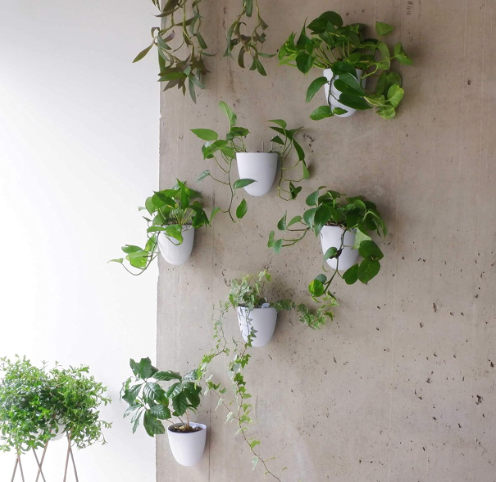
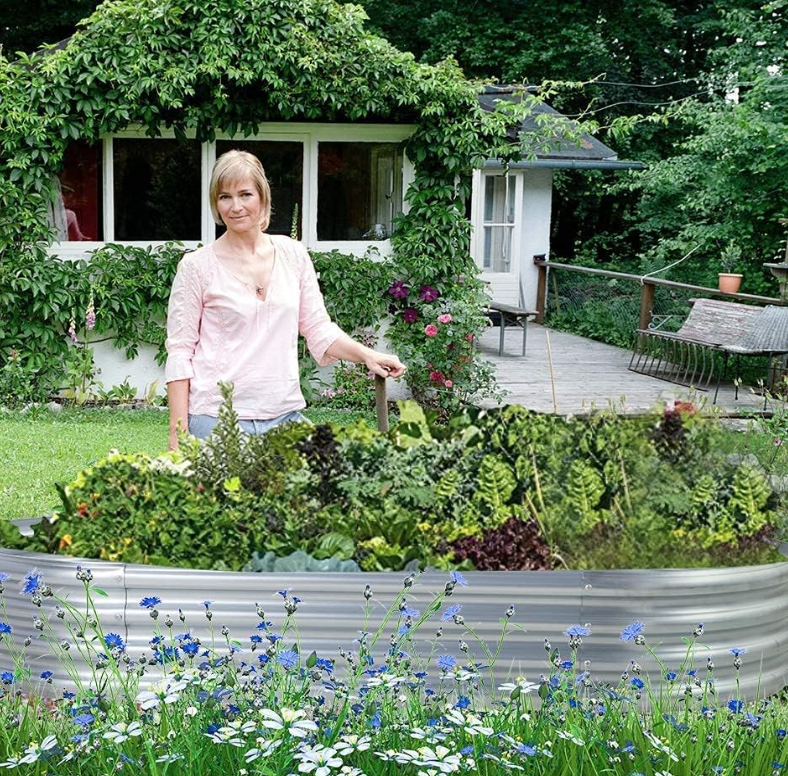
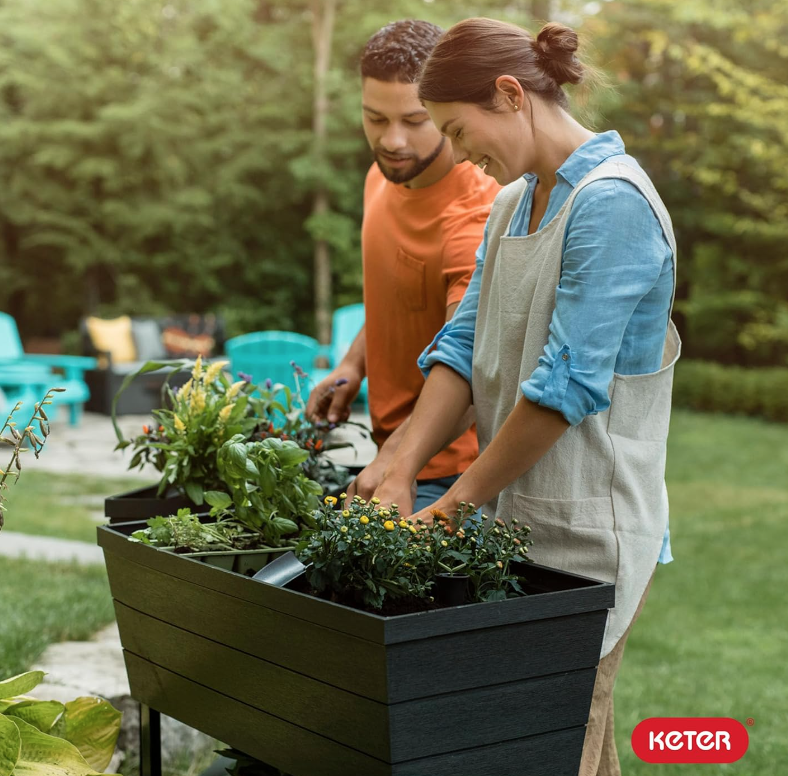
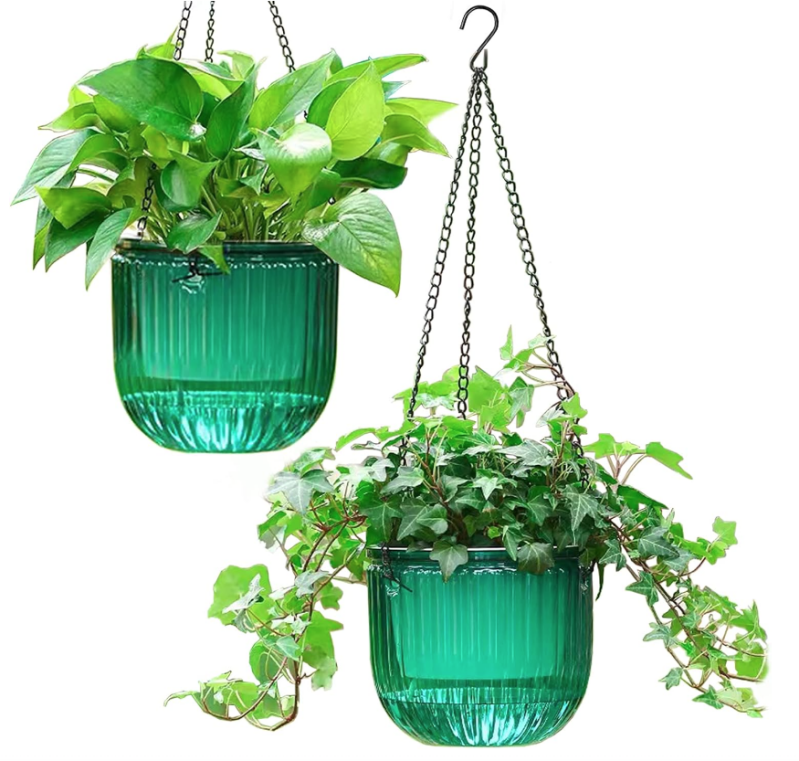




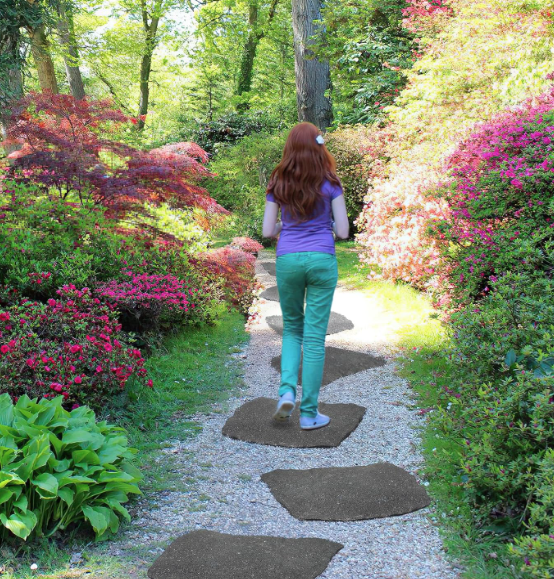
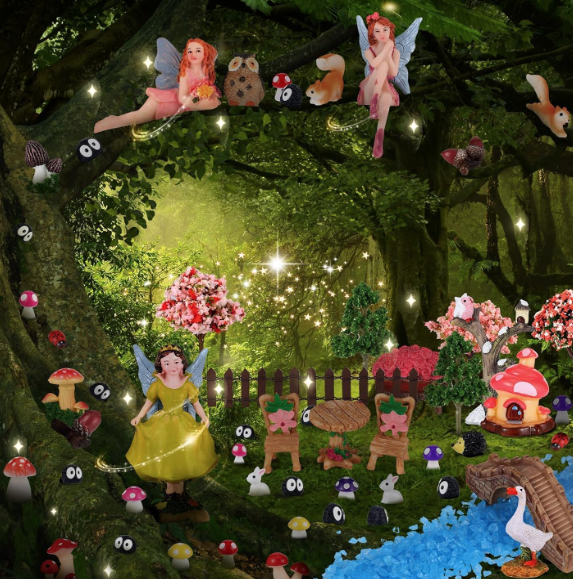

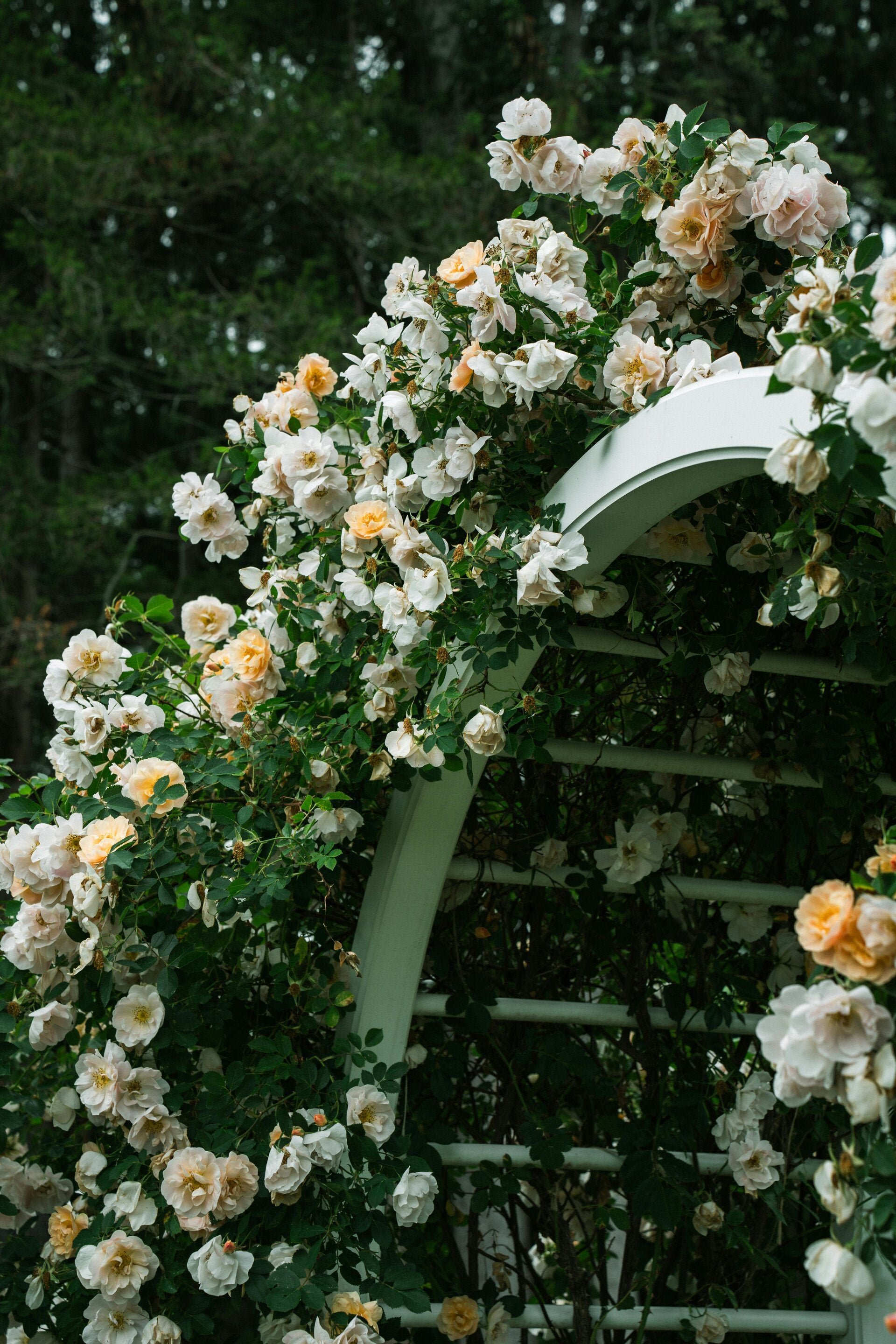


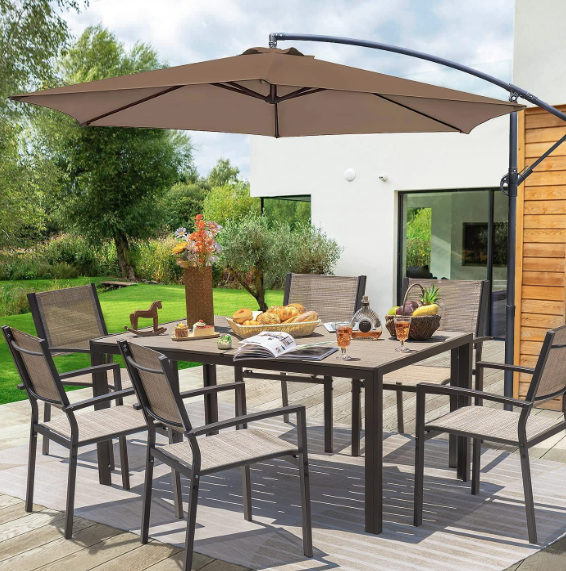



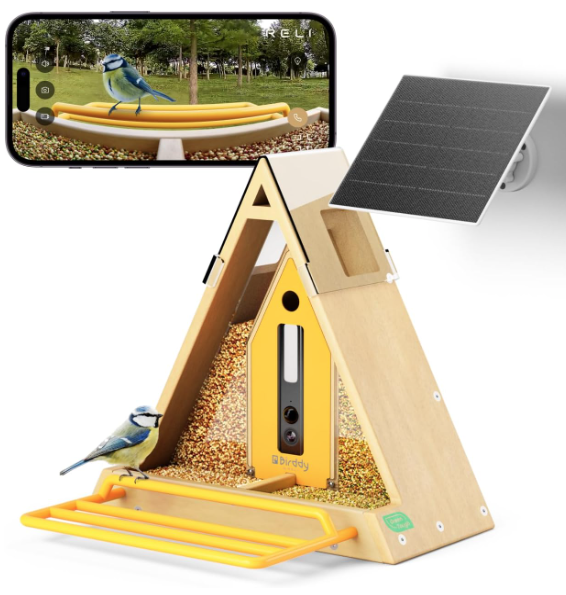

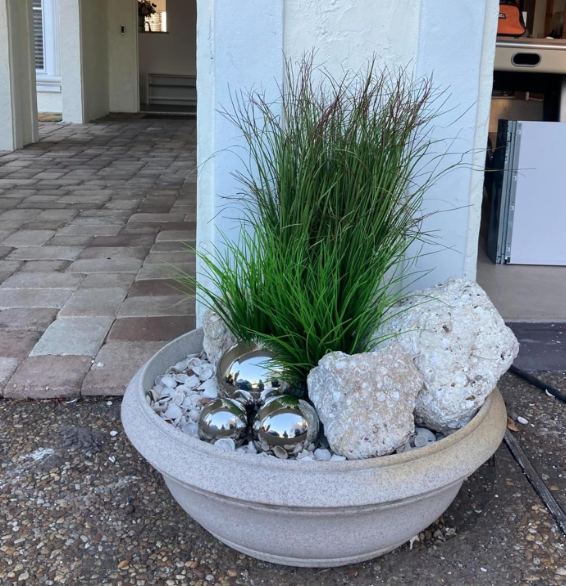
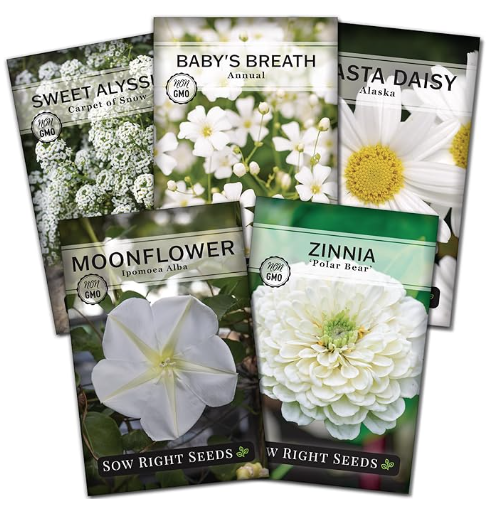
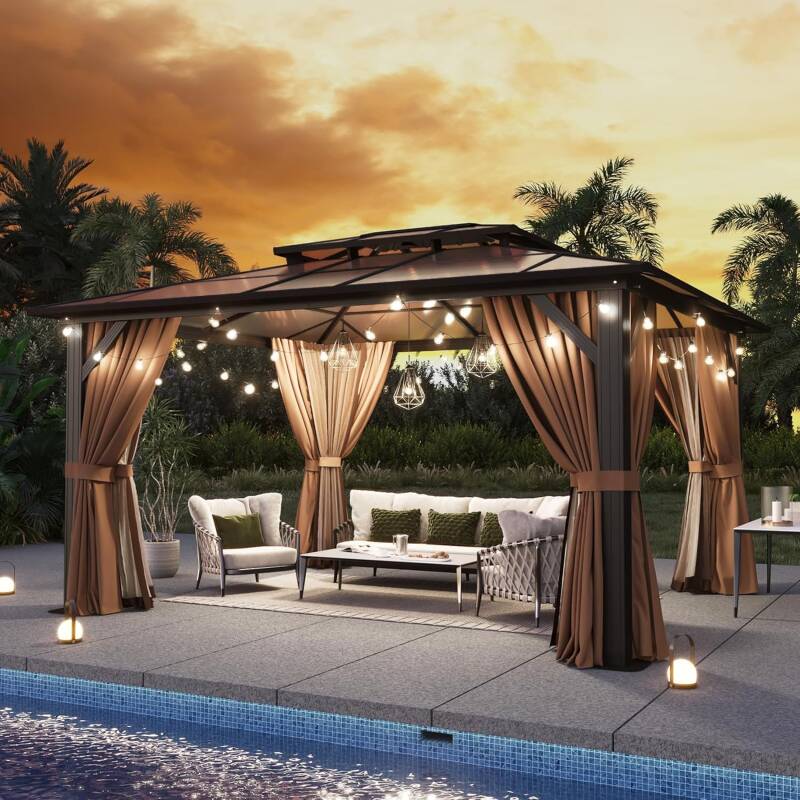
Add comment
Comments